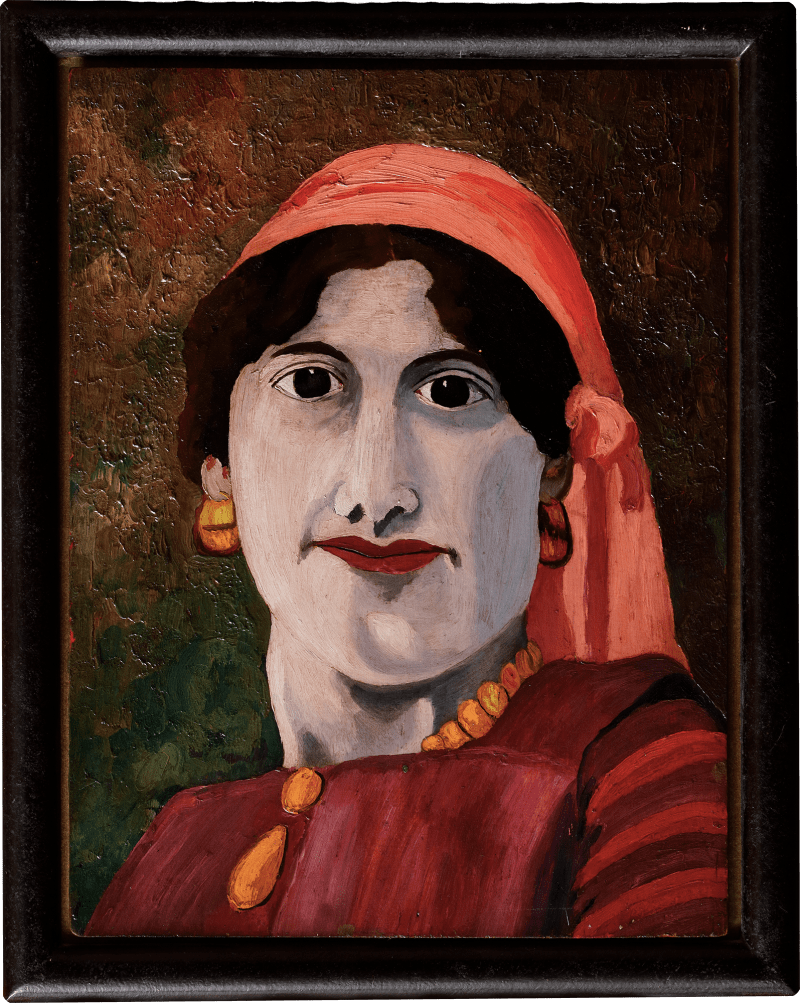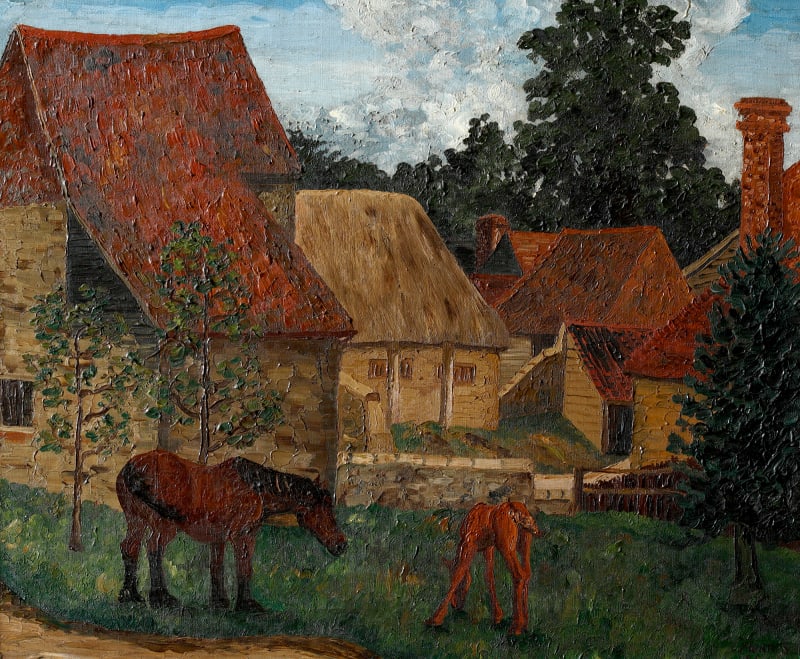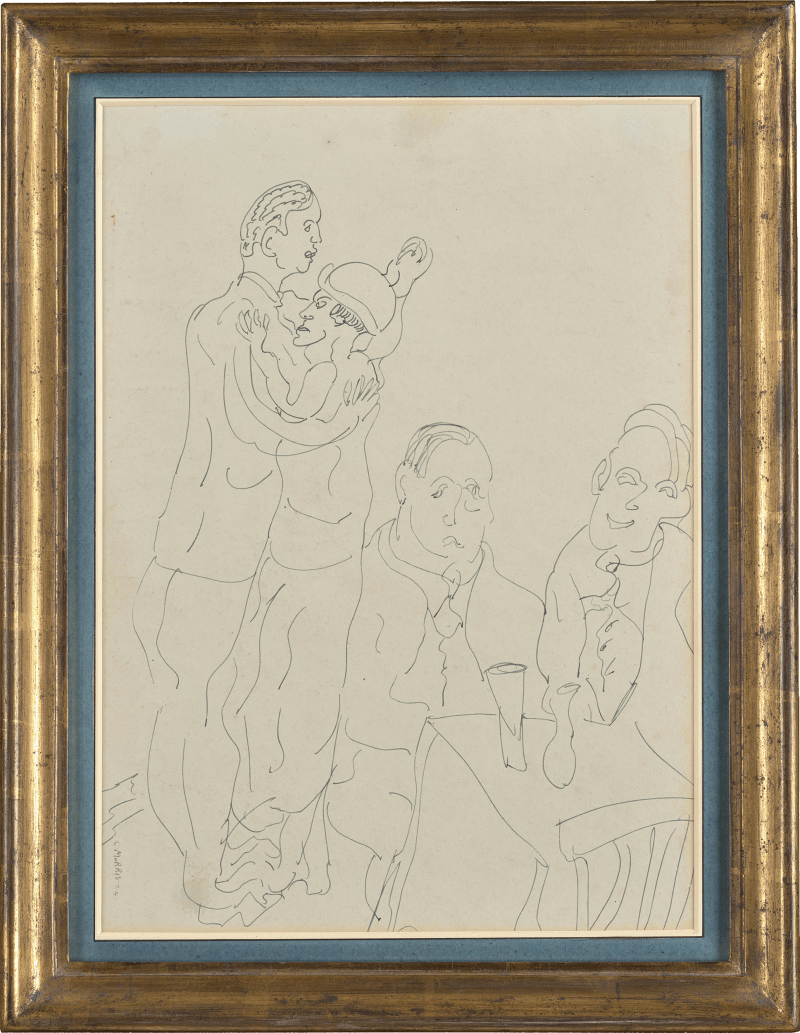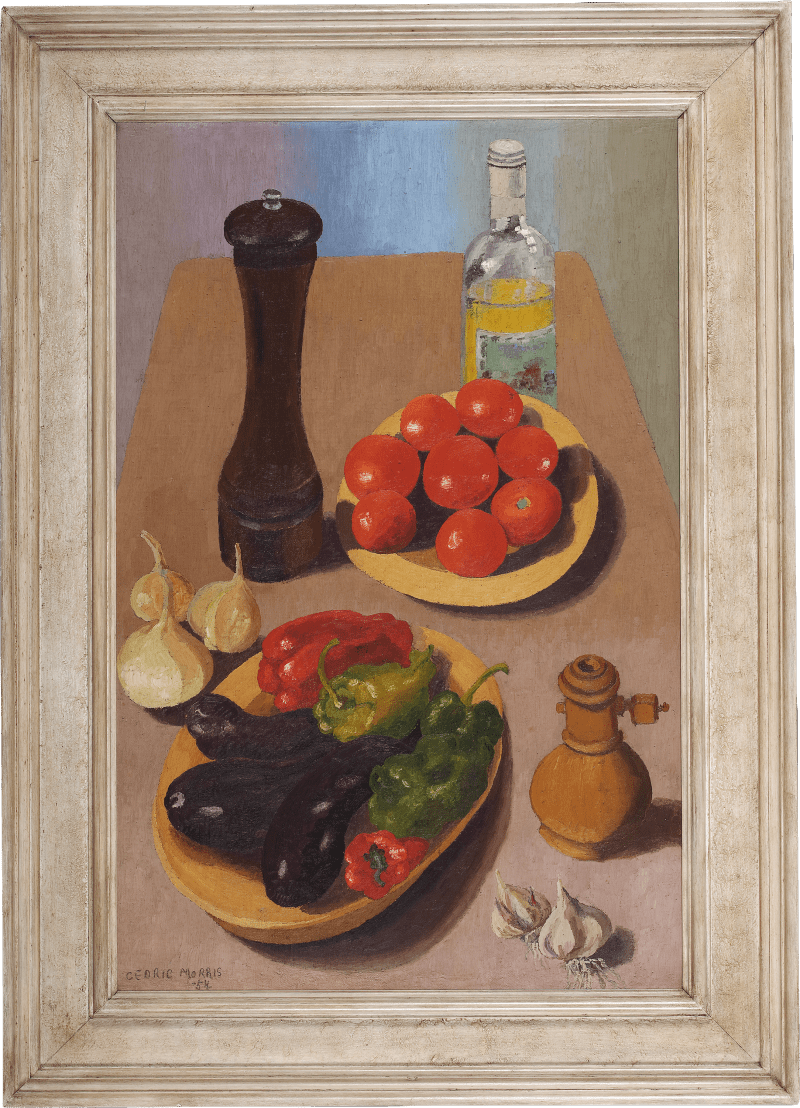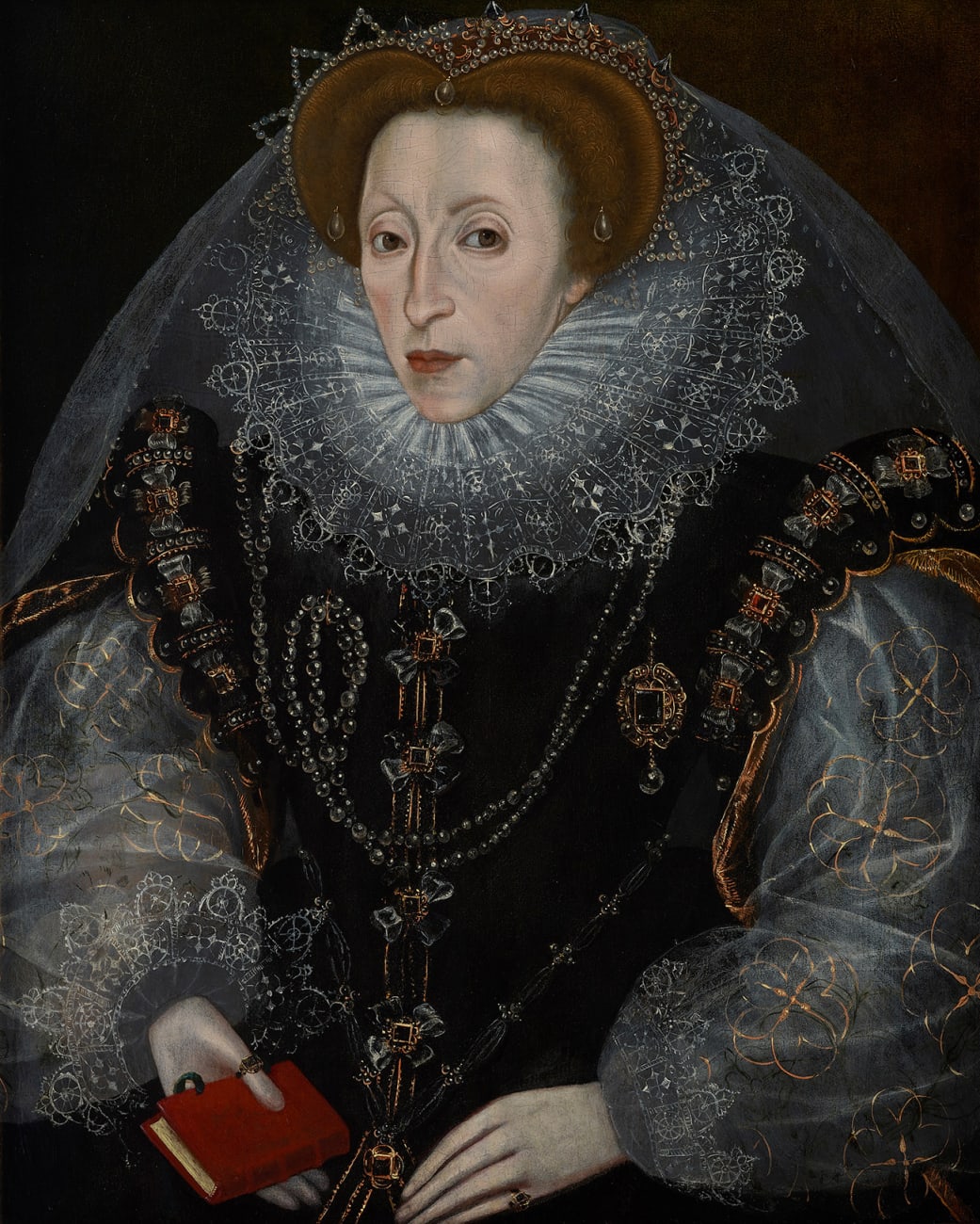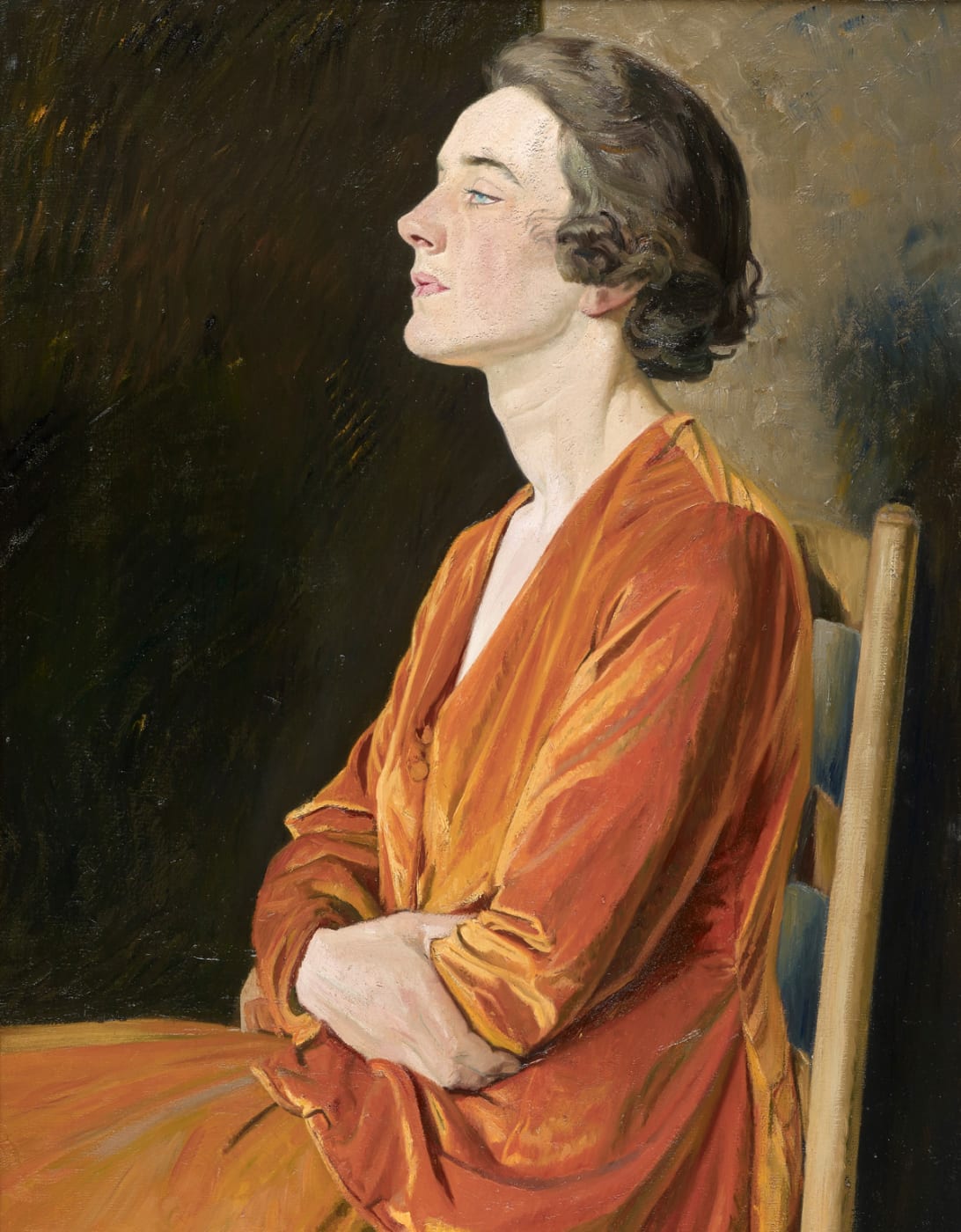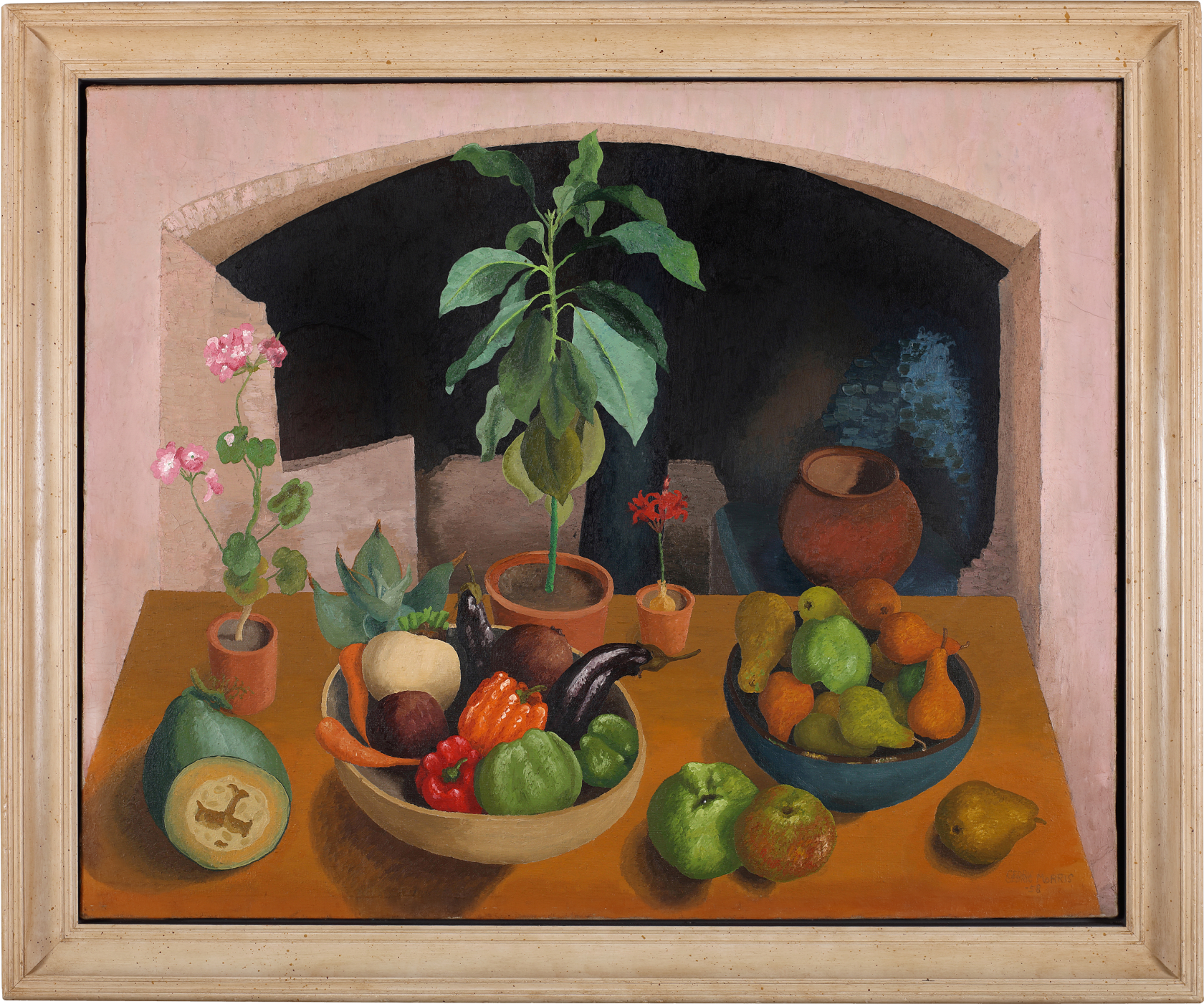

Cedric Morris
(1889-1982) Plants and Garden Produce at Benton EndProvenance
Private collection, acquired from the above c.1970 and thence by descent;
Christie’s, London, 20 Mar 2024, lot 2;
Philip Mould and Company, London, acquired from the above.
Literature
(1996) East Anglian Art Today. London: Royal Institute Gallery, no. 16;
(2025) Garden to Canvas: Cedric Morris and Benton End Exhibition Handbook. London: Philip Mould Gallery, pp.80-83
Exhibitions
The Minories, Colchester, Cedric Morris: Retrospective Exhibition, November – December 1968;
Royal Institute Gallery, London, East Anglian Art Today, January – February 1969, no. 16 [exhibited as Still Life];
Tate Gallery, London, Cedric Morris, March – May 1984, no. 92 [exhibited as Still Life of Garden Produce against an Old Chimney];
Philip Mould Gallery, London, Garden to Canvas: Cedric Morris and Benton End, 18 May – 20 June 2025.
This monumental painting is among Cedric Morris’ most ambitious interior still lifes. Set theatrically before the fireplace of the dining room at Benton End, the home of Morris and his partner Arthur-Lett Haines, the table is spread with an abundant array of seasonal produce.
Benton End was a sixteenth-century house on the edge of Hadleigh, Suffolk. Under the care of Morris and Lett, it became something far more extraordinary: a home, art school, and bohemian haven where artists, writers, students, and gardeners came to learn and live creatively. Their lifestyle was quietly radical. At a time when same-sex relationships between men were still criminalised in Britain, Morris and Lett-Haines lived openly as a couple and cultivated a world that was unashamedly eccentric, tolerant, and creative.
The dining room, where this painting is set, was the social heart of Benton End. Their dinners were often long, wine-filled, and raucous; Lett was a magnificent and inventive cook and presided over...
This monumental painting is among Cedric Morris’ most ambitious interior still lifes. Set theatrically before the fireplace of the dining room at Benton End, the home of Morris and his partner Arthur-Lett Haines, the table is spread with an abundant array of seasonal produce.
Benton End was a sixteenth-century house on the edge of Hadleigh, Suffolk. Under the care of Morris and Lett, it became something far more extraordinary: a home, art school, and bohemian haven where artists, writers, students, and gardeners came to learn and live creatively. Their lifestyle was quietly radical. At a time when same-sex relationships between men were still criminalised in Britain, Morris and Lett-Haines lived openly as a couple and cultivated a world that was unashamedly eccentric, tolerant, and creative.
The dining room, where this painting is set, was the social heart of Benton End. Their dinners were often long, wine-filled, and raucous; Lett was a magnificent and inventive cook and presided over long, convivial meals enjoyed by all visitors and students every evening. The ingredients depicted here – apples, pears, aubergines, carrots, peppers and carrots – would have likely been grown by Morris in his beloved garden and cooked by Lett in the kitchen: “[Lett-Haines] ran the household. I doubt if Cedric could boil an egg. […] [Lett] cooked for the students, who were of all ages and from all walks of life, and for numerous visitors, complaining eloquently as he stirred the pot with one hand, a glass of wine in the other, producing at the end of it memorable dishes.”[1]
By the late 1950s, Morris’ still lifes featuring vegetables and plants had become a signature of his later career. His thorough knowledge of botany, horticulture, and gardening was undoubtedly the bedrock of his paintings, suffused as they were with his profound appreciation for each and every plant. The plants and produce depicted here are imbued with personality. It is entirely unpretentious yet monumental in feeling, not only in scale, but in its gentle celebration of the rhythm and routines of domestic life at Benton End. Here, garden and kitchen, painting and planting, life and art are united.
The pink walls in the background offer a rare glimpse into the interior in the house itself, recalled by the gardener Beth Chatto: “Pale pink-washed walls rising high above us were hung with dramatic paintings of birds, landscapes, flowers and vegetables whose colours, textures and shapes hit me as though I were seeing them all for the first time. Filling the centre of the room was a long, well-scrubbed refectory table, and round it a rim of heads turned towards us.”[2] The house itself was a slightly ramshackle affair, sparsely furnished and cared for with a deliberate disregard for domestic convention.[3] This abundant painting reflects a home where conventional life was joyfully abandoned in favour of generosity and creativity.
[1] Beth Chatto quoted in Gwynneth Reynolds and Diana Grace (eds.), (2002) Benton End Remembered. Norwich: Unicorn Press, pp.87-88.
[2] Beth Chatto quoted in Gwynneth Reynolds and Diana Grace (eds.), (2002) Benton End Remembered. Norwich: Unicorn Press, p.85.
[3] Kathleen Hale in Gwynneth Reynolds and Diana Grace (eds.), (2002) Benton End Remembered. Norwich: Unicorn Press, pp.87-88.



